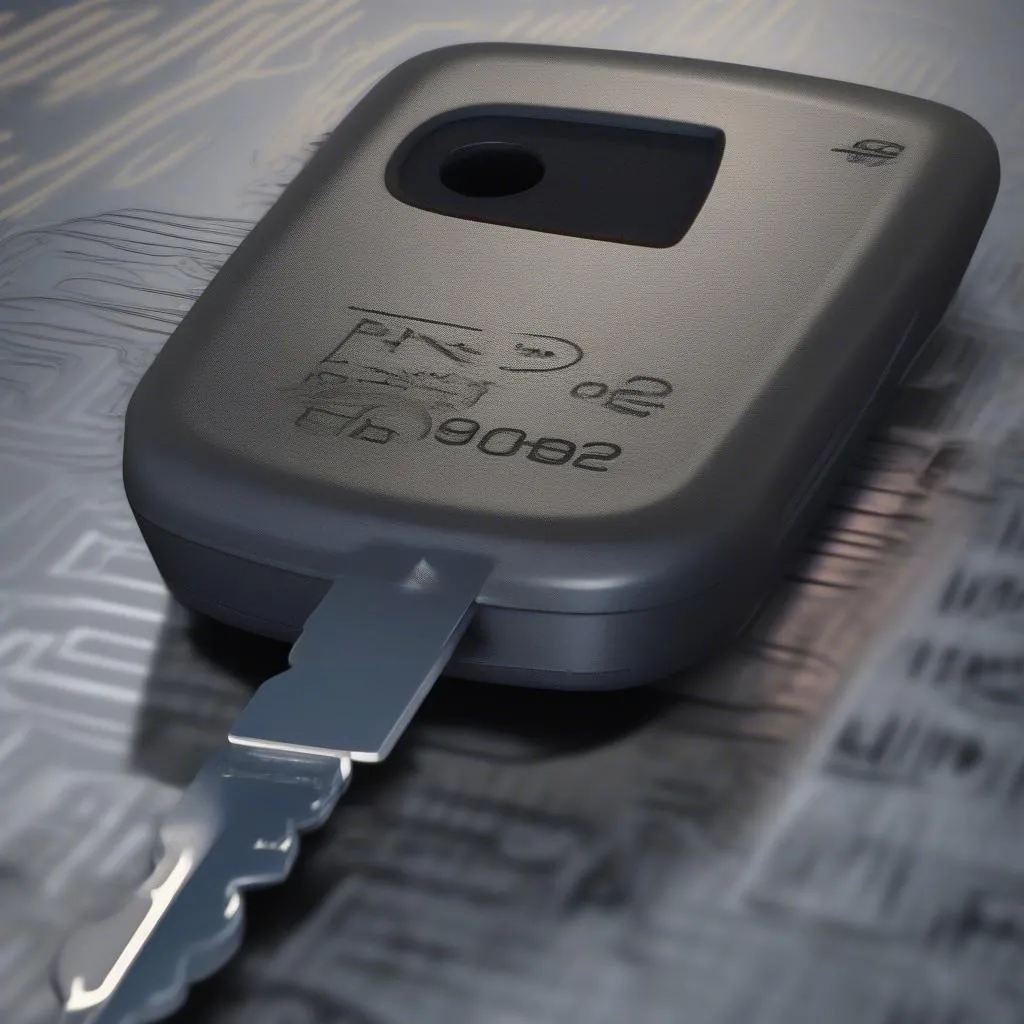In the world of automotive security, understanding the basics is crucial for protecting your vehicle. If you’ve ever wondered, “What is a passive anti-theft system?” you’re in the right place. This article will delve into the intricacies of passive anti-theft systems, covering everything from their functionality to their benefits.
Understanding the Core: How Passive Anti-theft Systems Work
Unlike active anti-theft systems that require driver intervention (like arming an alarm), passive systems work silently in the background to deter theft. They are always on and function without any action from the driver.
Here’s the gist:
- Key Recognition: At the heart of a passive anti-theft system lies a transponder chip embedded in your car key. This chip transmits a unique code to the vehicle’s computer system.
- Immobilization: If the received code doesn’t match the pre-programmed one, the vehicle’s engine control unit (ECU) prevents the engine from starting, effectively immobilizing the car.
Think of it like a secret handshake. Only with the correct signal (from your key) will your car “greet” you and allow access.
Spotting a Passive System in Action
While their operation is silent, there are subtle signs of a passive anti-theft system at work:
- Security Light: Notice a blinking light on your dashboard that resembles a car with a key or lock symbol? That’s your car’s way of saying its passive anti-theft system is armed and ready.
- Key Fob Range: Modern cars with keyless entry utilize passive systems for unlocking. A limited range for key fob operation often indicates a passive system ensuring only authorized individuals within close proximity can access the vehicle.
Benefits of Passive Protection
The beauty of passive anti-theft systems lies in their simplicity and effectiveness:
- Deterrent Effect: The mere presence of a passive system is often enough to discourage potential thieves.
- Seamless Operation: Forget about actively arming or disarming – your passive system is always on guard.
- Enhanced Security: By preventing hot-wiring and other common theft methods, passive systems provide a significant security boost.
 Car Key with Chip
Car Key with Chip
Common Questions About Passive Anti-theft Systems
Let’s address some frequent queries:
Q: Can a passive anti-theft system be bypassed?
While sophisticated thieves might attempt bypass techniques, modern passive systems are designed with advanced encryption and rolling codes, making them incredibly difficult to circumvent.
Q: What happens if my key fob battery dies?
Most vehicles have backup systems, allowing you to start the car using a physical key or a designated area on the key fob to touch the start button. Refer to your owner’s manual for specific instructions for your vehicle model.
Q: Can I upgrade my car with a passive anti-theft system?
Aftermarket installation is possible but often requires expertise. Consult with a trusted automotive electrician or security system specialist for options compatible with your vehicle.
Cardiagtech: Your Partner in Automotive Diagnostics and Security
Understanding your car’s security features is essential. For any questions or concerns regarding your vehicle’s anti-theft system or for professional diagnostic services, Cardiagtech is here to assist. Our team of experts can provide insights into the latest automotive technologies, including advanced diagnostic and programming tools like those offered by Cardiagtech.
 Car Dashboard Security Light
Car Dashboard Security Light
Conclusion
Passive anti-theft systems are a fundamental aspect of modern vehicle security. By understanding their function and benefits, you can have peace of mind knowing your car is equipped with a reliable layer of protection. If you’re experiencing any issues with your vehicle’s anti-theft system or seeking expert diagnostics, don’t hesitate to connect with CARDIAGTECH. We’re dedicated to keeping your vehicle safe and secure.

